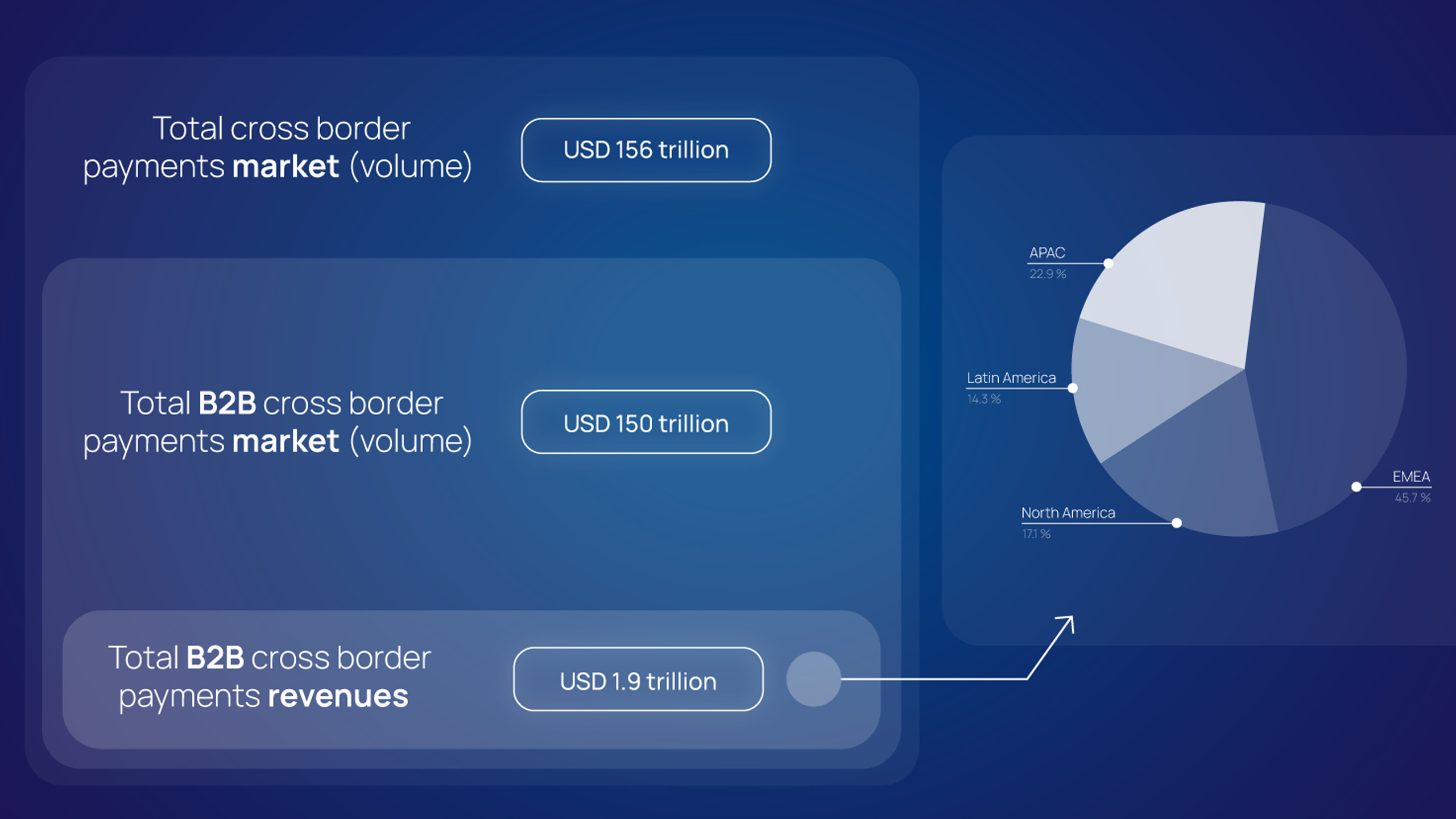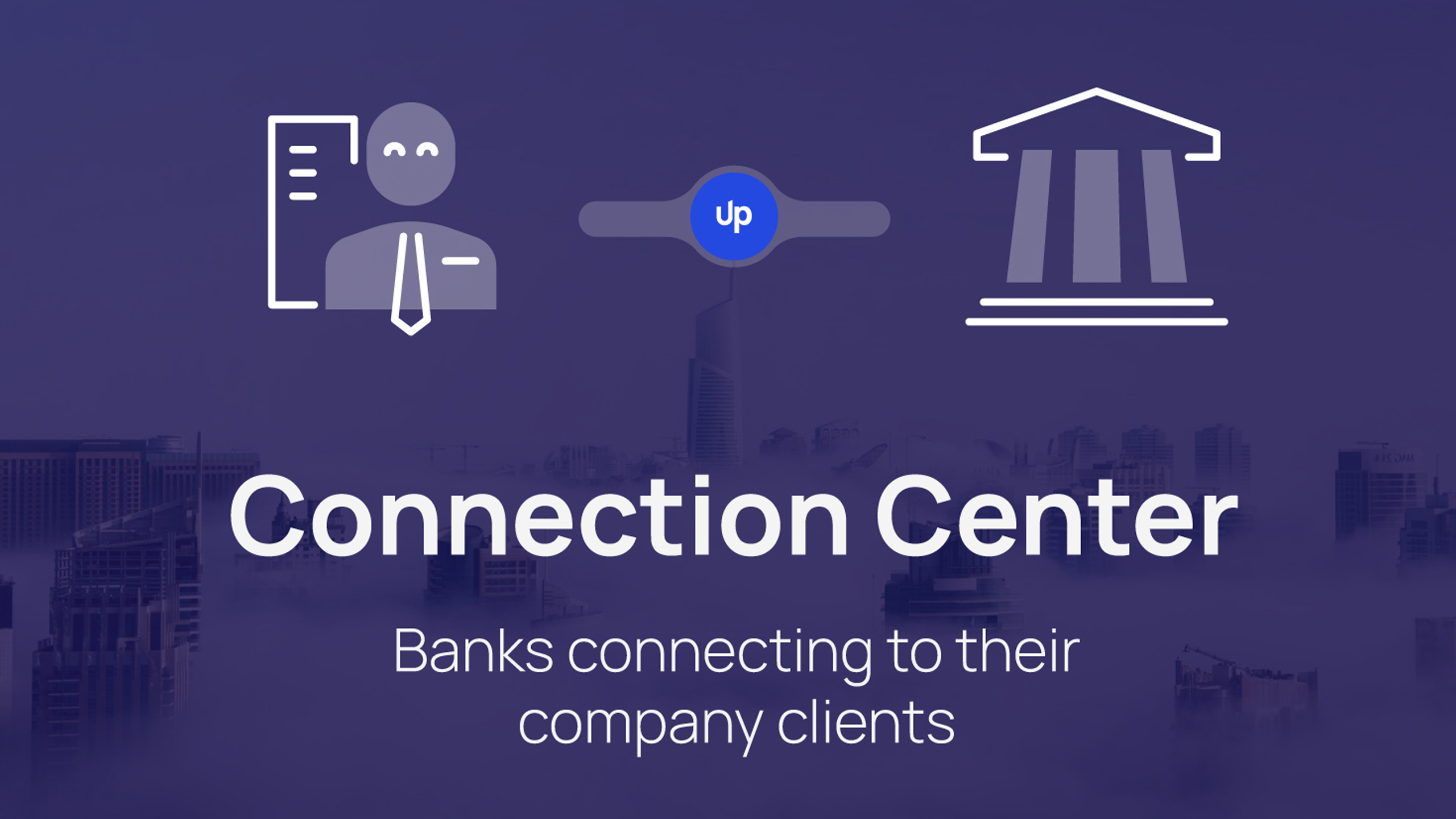

The payments market has been shaken recently, from frictionless national payments in the retail segment to smooth cross-border payments for companies. The B2B segment currently covers 96% of all global cross-border payments volumes. Even though some new unicorn players have gained serious market shares with their offerings, banks still form a vital part of the global infrastructure. Instead of allowing larger parts of this market to be eaten by others, banks can substantially improve their offerings in most cases.
➡️ Click Here and Subscribe to our Monthly LinkedIn Newsletter ‘TreasurUpdate for Banks’
According to EY – a global accountant and consultancy firm – the total global cross-border payment flows will reach USD 156 trillion this year, of which they estimate USD 150 trillion to come from B2B transactions. Cross-border business payments made up around 10% of the total revenues on all payments for consumer and business segments globally – USD 1.9 trillion in 2020. The size of the market differs per region, though. Revenues on cross-border payments were highest in EMEA (16%) and APAC (8%). North America formed 6% and Latin America only 5%, according to McKinsey – a consultancy firm.

Cross-currency payments to other countries have been given a lot of attention by FinTechs and banks on the retail side. Next to banks, Money Transfer Operators (MTOs) such as Western Union, Corpay, and StoneX can be considered major players in this market. Many new (unicorn) players that have entered the market like Stripe, Wise, Banking Circle, and Square are considered fintech MTOs. In 2020, fintech MTOs only accounted for 5% of the USD 150 trillion B2B cross-border payments market, according to Flagship Advisory Partners – a consultancy firm.
One of our major shareholders OFX is a FinTech MTO as well.
Making a foreign payment to existing suppliers can be quite cumbersome at a bank, let alone in the case of a one-off or new supplier with a non-G10 currency.
Small and medium-sized companies with an annual turnover up to around USD 500m seem to have been the segment last in line for renewal. Banks’ retail and large corporate clients were given advanced cross-border payment solutions long ago. According to The Global Treasurer, cross-border payment solutions from banks for SMBs mainly lack:
Most important in this segment is a frictionless journey. Since cross-border payments come with many additional input fields on the country, counterparty, and bank details, it takes a bit more time and effort to do it right. The first time right is important because once the money has crossed the border, it is usually challenging to refund.
The next most important element is the costs related to the payment. The World Bank estimated a transfer of USD 200 to cost 6.5% of fees. The more frequently a company executes cross-border payments, the more sensitive it will be to transaction costs. Many FinTech entrants have focused on lower transaction costs, a broad global settlement reach, and fully digital journeys.

According to Payments Journey – an online payments and banking news website – most cross-border payment flow still heavily rely on banks’ infrastructures for settlements and currency conversions but also for KYC and fraud detection. The most important bank players in this field are banks with extensive correspondent bank relationships, like Citi, BNY Mellon, and HSBC.
Cross-border payments still heavily rely on a network of correspondent banks that each need to perform checks, which adds lead time and fees to the transaction. Next, a large part of the underlying infrastructure from banks is based on legacy and therefore adds limitations. On top of that, cross-border payments are typically managed by Cash Management departments with limited involvement from Financial Markets divisions, besides an infrequent quote update from their pricing platform. User journeys are not optimally supported as banks focus on domestic B2B payments. From a revenue point of view, banks have a lot of upsides if they would give this business more attention, though.
Fintech MTOs might have better pricing and smoother journeys, but banks don’t need to underperform. Banks have USPs that can be hard to match for some new players. First, they can easily integrate their Forex capabilities with the payments side. That means collateral is never required, and the bank’s balance sheet is the starting point. By integrating the journeys, clients can see live (streaming) FX quotes per payment before executing. If a client does not have sufficient balance on the FX account, the platform can offer to draw down on an existing hedge.
The other interesting element of such journeys is cash visibility. Banks can offer insights into current and future cash positions per currency. This could include deposits and credits, and loan settlements. Through Open Banking APIs, the picture can be even more completed. Proper cash insights and management can best be truly multi-channel: Web, Mobile, APIs, and People. The latter is another USP of banks. The front office is capable of supporting a company with efficient and rational cross-border payment processes. That sometimes offers much larger savings than the sole fees on the actual payment transaction.
➡️ Click Here and Subscribe to our Monthly LinkedIn Newsletter ‘TreasurUpdate for Banks’

TreasurUp has developed an ERP Connection Center that allows seamless integration to treasury solutions offered by banks. Data collectors and/or API connections companies can connect their ERP data. As a result, banks can improve their value proposition through fully automated and intuitive Commercial Banking front ends (e.g., FX hedging & trading, cash forecasting, and working capital) to their SMB corporate clients.
IF banks offer sufficient value in their online Commercial Banking proposition, THEN company clients would want to connect with their banks.
Stay “TreasurUpdated” on the latest in online Commercial Banking, and subscribe to our monthly LinkedIn Newsletter.